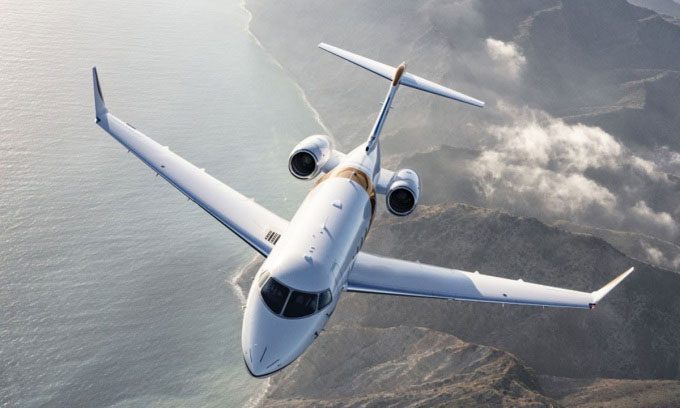Private jets can fly higher than 15,500 meters, while most commercial passenger planes operate at altitudes of 9,000 to 12,000 meters.
There are many reasons why private jets, in addition to their luxurious characteristics and amenities, often fly higher than commercial passenger aircraft.

Bombardier Challenger 3500 private jet. (Photo: Bombardier)
Safety Standards
Safety is a top concern for all types of aircraft, but private jets are more flexible regarding regulations and systems. In the event of a cabin pressure drop, commercial planes must quickly descend to a safe altitude (below 3,000 meters) with sufficient oxygen for passengers. This requires aircraft to have special features and safety equipment such as oxygen masks and emergency slides. However, private jets can descend faster and have varying cabin pressure levels along with oxygen supplies. The risk of damage to the fuselage of private jets due to engine failure is also lower, as the engines are located at the rear of the aircraft, away from the pressurized cabin.
Faster and More Efficient Private Jets
Flying at higher altitudes offers performance and fuel efficiency benefits. At this altitude, the air is thinner and cooler, which enhances jet engine performance and reduces fuel consumption. However, this must be balanced with the amount of fuel needed to reach such heights. For heavier commercial aircraft, this is a more significant issue. Private jets are also equipped with engines that have a lower bypass ratio, meaning they use more air from the engine core rather than from the surrounding fan. This helps optimize their performance at higher altitudes.
Size
Private jets are designed for flexibility and efficiency, boasting a higher power-to-weight ratio than commercial planes. This means they can climb faster and maintain higher speeds at altitude, where the air is thin and there is less drag. Commercial aircraft are heavier and bulkier, carrying more passengers and cargo. They also require large wings to support their heavy fuselage at high altitudes.
Smoother Flight Experience
Weather and air turbulence will affect comfort and safety during flights. At 10,500 meters, commercial aircraft are above most weather phenomena but may still encounter turbulence from wind shear or jet streams. This can be uncomfortable for passengers and crew, and it can put structural stress on the aircraft. Private jets can avoid these problems by flying higher, where it is smoother and clearer. They also have more options to change flight paths or altitudes if faced with bad weather or turbulence.
Less Air Traffic
Air traffic is another factor that influences altitude selection. Commercial aircraft must adhere to predefined flight paths and altitudes, which are often very congested. This can lead to delays, rerouting, increased fuel consumption, and emissions. Private jets have more freedom in choosing their routes and altitudes, often flying straighter and in less crowded airspace. This helps save time and costs while reducing environmental impact.




















































